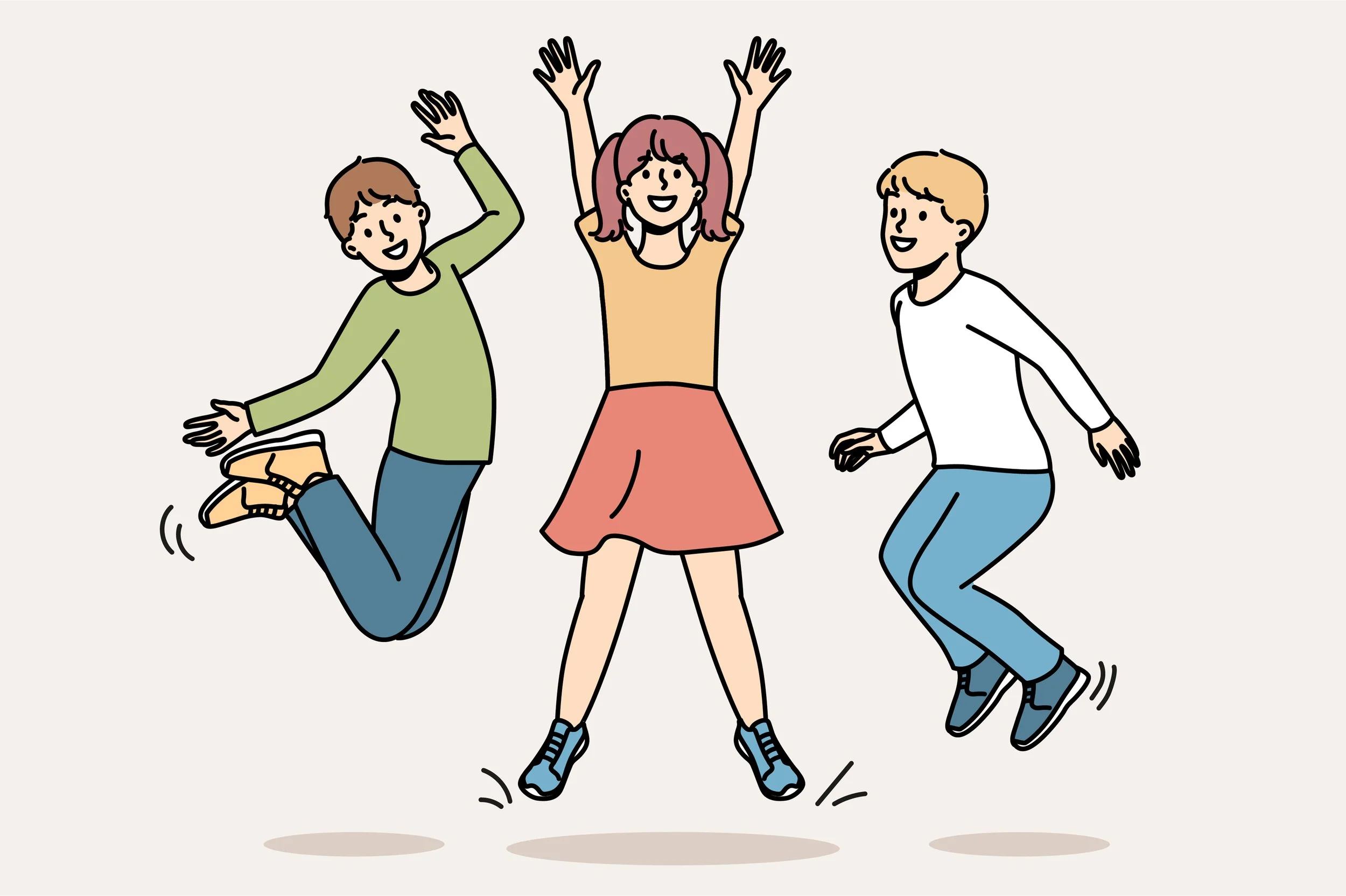Teaching Kids How to Make and Keep Friends
Teaching Kids How to Make and Keep Friends
Friendship is one of the most important parts of childhood — but it doesn’t always come naturally. Learning to make and keep friends is a process of developing empathy, communication, and emotional awareness through daily experiences.
By guiding children gently through early social interactions — sharing, turn-taking, joining play, handling rejection — parents can help them build the foundation for healthy, lasting relationships.
Why Friendship Skills Matter
Friendship skills are more than just “playing nice.” They’re core components of social and emotional development that influence confidence, cooperation, and long-term happiness.
Research shows that children who learn early social skills tend to:
Have higher self-esteem
Handle frustration and conflict more effectively
Experience less loneliness and anxiety
Perform better in group learning environments
👉 In other words, helping kids connect with others is one of the best investments you can make in their future well-being.
1. Start With Play — The Natural Language of Friendship
Play is where friendships begin. For young children, play is the primary way they connect and communicate.
Encourage:
Parallel play for toddlers — playing side-by-side builds comfort before collaboration.
Simple cooperative play for preschoolers — sharing materials, trading toys, or taking turns.
Imaginative group play for early school-age children — pretending, building, and storytelling together.
✨ Your role: Set up environments that invite shared experiences — sandboxes, building blocks, art projects, or pretend kitchens.
Key tip: Avoid forcing friendship. Repeated exposure, not pressure, is what builds connection.
👉 See also: Turn-Taking & Sharing: What’s Age-Appropriate (and What’s Not)
2. Model Friendly Behavior
Children learn social skills by watching adults interact. Your tone, words, and body language become their social template.
Try modeling:
“Hi, can I play with you?”
“That looks fun — can I help?”
“I like your idea. Let’s build on it.”
👉 When you model inclusion and kindness in your own interactions — with neighbors, siblings, or even store clerks — your child learns how to approach others with confidence.
✨ Kids absorb what they see far more than what they’re told.
Skill focus: social language, empathy, confidence
3. Practice Social Scripts Through Role Play
Young kids benefit from practicing simple friendship phrases before using them in real life.
Try:
Role-play joining a group:
“Hi, can I play too?”
“What are you building?”Practice giving compliments:
“I like your drawing!”
Teach how to invite someone:
“Do you want to play blocks with me?”
👉 Make it silly — take turns being the “new kid” or “inviter.” Puppets work great here too.
✨ The goal is to make these scripts feel natural and automatic in real settings.
Skill focus: communication, initiation, self-confidence
4. Encourage Emotional Awareness in Social Moments
Friendship requires tuning in to other people’s emotions — a skill that develops slowly and through repetition.
When playing or socializing, help kids notice:
Facial expressions (“He looks sad — maybe the tower fell.”)
Tone of voice (“She sounds upset. What could help?”)
Body language (“He crossed his arms — maybe he doesn’t want to play that game.”)
✨ Labeling social cues builds empathy and teaches children that friendship means noticing how others feel.
Skill focus: empathy, perspective-taking, emotional literacy
5. Teach Conflict Resolution Early
Even the best friendships have bumps — toys get snatched, turns are skipped, feelings get hurt. These moments are opportunities to teach repair, not blame.
Guide kids through a simple process:
Pause and breathe.
Name the feeling: “You’re mad because he took your toy.”
Listen to both sides.
Brainstorm together: “What can we do to make it better?”
Model apologies that focus on empathy (“I’m sorry I hurt your feelings. Are you okay?”).
✨ Conflict resolution is friendship maintenance — the skill that keeps relationships strong.
Skill focus: communication, emotional regulation, problem-solving
👉 See also: Helping Kids Cope With Big Feelings Without Meltdowns
6. Nurture Kindness and Inclusion at Home
Friendship habits begin with how children treat people in their immediate circle — siblings, parents, or caregivers.
Model and reinforce:
Kind language: “Thank you,” “Please,” “I like playing with you.”
Empathy phrases: “That might make him sad,” “Let’s help her feel better.”
Inclusive play: Invite new friends or younger siblings to join.
✨ Encourage noticing others’ needs: “Look, your friend dropped their crayons — can you help?”
These small, daily acts shape children who are naturally kind and welcoming.
Skill focus: empathy, responsibility, leadership
7. Coach From the Sidelines, Don’t Control the Game
When kids play with others, it’s tempting to jump in at the first sign of conflict. But hovering prevents problem-solving. Instead, be a quiet observer and coach from the edges.
Try:
Gentle prompts: “What could you say to your friend right now?”
Reflection afterward: “How did you feel when that happened?”
✨ Support, but don’t script every move. Let kids experience trial and error — it’s part of learning social confidence.
Skill focus: independence, emotional insight, social problem-solving
8. Celebrate Small Social Wins
Making friends takes courage — especially for shy or sensitive kids. Recognize and praise genuine effort:
“You said hi to someone new today. That was brave!”
“I noticed you shared your crayons — that was kind.”
✨ When you highlight small acts of friendship, you reinforce positive behavior and build self-esteem.
Skill focus: self-confidence, positive reinforcement, motivation
Friendship skills don’t appear overnight — they’re cultivated through thousands of small interactions, guided conversations, and moments of modeling.
By making play collaborative, language kind, and problem-solving consistent, you’re teaching your child the building blocks of emotional intelligence and empathy.
Over time, those lessons grow into strong, caring relationships that last far beyond childhood.
This content is for educational purposes and is not a substitute for professional medical or psychological advice.
Popular Parenting Articles


